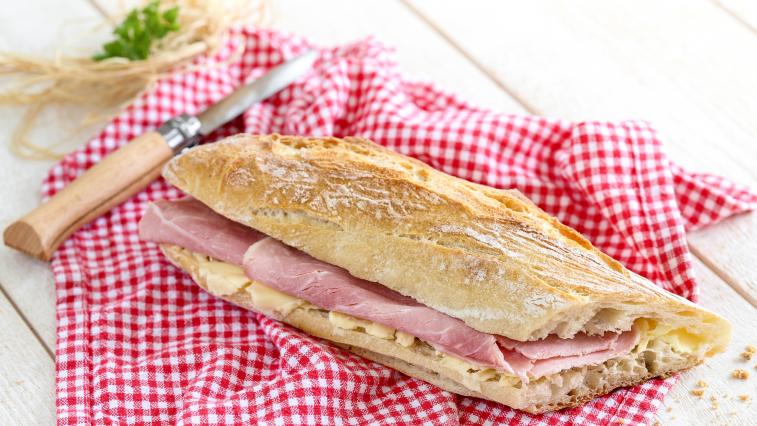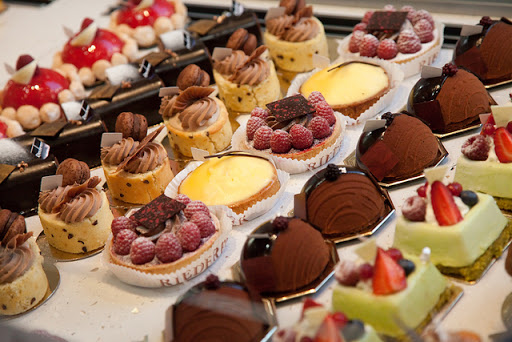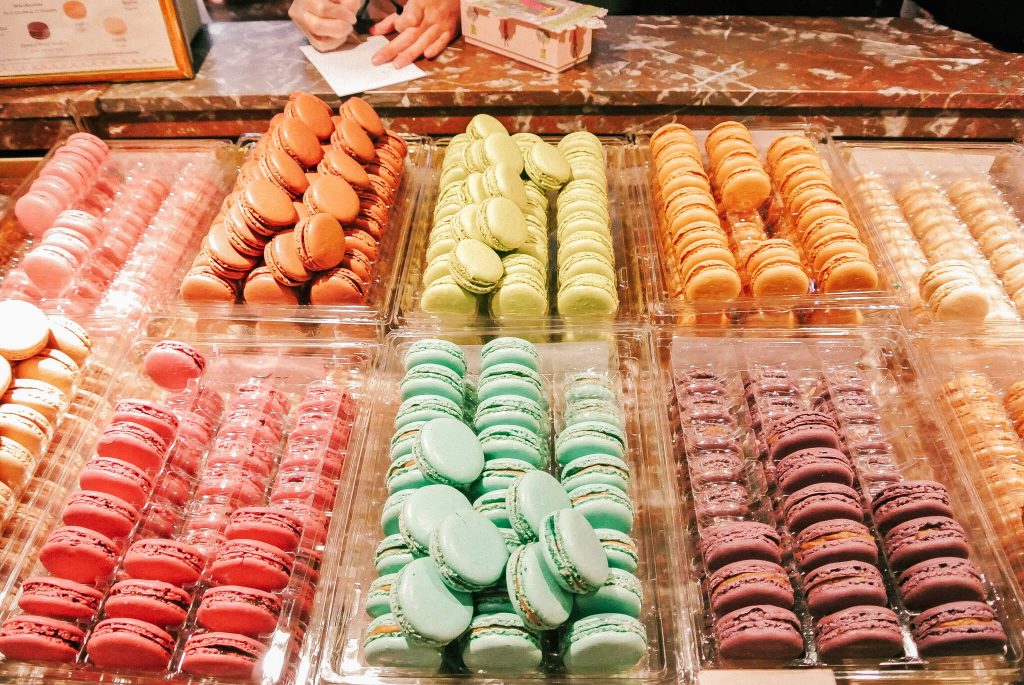France is well known as the culinary capital of the world, and with good reason. But too often the discussion of French food gets wrapped up in expensive caviar and pompous fois gras, and absolutely loses touch with the every day reality of most French citizens who are located in the city of love. Here are six normal things you absolutely have to eat when you come to Paris.
A Crêpe Made in Front of You

Paris has hundreds – if not thousands – of crepe stands and little dives where you can pop in to grab a hot crêpe as a midmorning bite, an afternoon snack, or in many cases even to fill a midnight craving. In my experience, the crêpes aren’t usually that different from one stand to the next, but where you choose to eat it, as with all things, makes a difference.
What’s important about getting one in Paris is watching them do it right in front of you. Lots of boulangeries around the city will make crêpes fresh at the beginning of the day and let them sit in a display case for the duration of the day. These crêpes are as good as they can be, but the boulangeries should stick to the croissants. A hot crêpe is the difference between throwing the thing away after a few bites, and being glad facemasks are a thing, because you have Nutella all over your nose.

My personal favorite place to grab a hot crêpe au Nutella is on Montmartre, at a place called La Goutte de Lait (The Taste of Milk). Technically it’s an ice cream shop (and the ice cream is delicious too), but the crêpes are exactly what you want from a fresh and hot crêpe. Plus, they also sell bottles of water for pretty cheap, which is useful when you inevitably need to get that Nutella off of your nose. What’s more, though, is that the place du tertre is a great place to really experience Paris authentically. There’s a million little things that just make it the perfect place to experience what you came to see. (For more on Montmartre and the Place du Tertre, visit my other post covering them!)
Une Baguette Tradition

Baguette France is obviously uncontested as some of the best baguette, and dare I say the best bread, in the world. But French baguette is a whole world in and of itself. There are more than a dozen kinds of baguette that the French like to order at the boulangerie, but in my humble opinion, the baguette tradition (cuit au préférence) is superior.
Most places (not all) will require that you ask for a baguette tradition specifically, as they usually sell the “classique” variety too. A tradition is a form of baguette a little bit more artisanal, and a little richer too. Typically, you won’t find these at grocery stores, but only baked fresh each day at your local boulangerie. They usually cost about €0.20 to €0.40 more than the baguette classique, but it’s worth every centime.
These things are great. They don’t need much, if anything, to be worth eating because they hold a ton of unique flavor and texture in them. I have, no joke, eaten entire baguettes tradition without any condiments, cheese, or filling. They’re that good.
Sandwich Jambon Beurre

The jambon beurre, or literally ham butter, sandwich isn’t delicious because of any sort of complexity or overexuberance. In fact, what it excels at is quite the opposite. All the jambon beurre really is is half a baguette tradition, spread with some authentic French butter, layered with a few pieces of thick cut French ham, and occasionally a few slices of emmental cheese. That’s it.
But this simple sandwich speaks to exactly why France is the culinary capitol of the world in the first place – every single ingredient of the jambon beurre is made by someone who has likely spent their entire life, or a sizable portion of it, learning how to make that ingredient. In many cases, the ingredient is part of a traditional recipe handed down from generation to generation. A baguette tradition is the bread made by artisan bakers; the butter is made by farmers on a family plot owned for a hundred years or more; the ham is cooked for just long enough in a unique process fine tuned by its maker.
The other great beauty of the jambon beurre in Paris is its quality as a great street food. You don’t need a table, a fork, or really even a napkin to eat it. It’s the perfect lunch if you don’t have much time in Paris, so you can grab it and eat it as you’re walking through the tuileries or across one of the many beautiful plazas in Paris.
Something That Looks Too Sweet

If you’re anywhere in Paris, and especially if you find yourself in the center of it, you will certainly pass a patisserie displaying dozens of handheld sweet treats in the window. They’re always gorgeous and they look almost like works of art rather than pastries. But, most Americans (myself included) take a look at them, admire them, and then start to think about just how overly sweet they probably are. I have no clue why we always think this; maybe it’s because we don’t see elaborate pastries like this in the US, or maybe it’s because we just have too much sugar to begin with. Whatever the root cause, if that thought runs through your head, it’s probably wrong.
I urge you to choose something that looks so entirely sickeningly sweet, and buy and taste it. Usually you can get something like that for less than five euros, but it can totally change the way you see sweets forever. They are sweet, don’t get me wrong, but it almost always comes in a seemingly natural form. If you get a tarte aux fraises, the sweetness seldom comes from the glaze over the top, but from the strawberries themselves. If you get a gateau St. Honoré, the sweetness is even more mild, and comes from the creamy custard piped on it. It’s almost never too much sweetness, and it gives you the chance to taste all the other flavors that the pastry chef likely worked so hard to put into the pastry.
Trust me, trying something that looks way too sweet will give you a whole new respect for what were once just pretty pastries.
Several Croissants au Beurre

Once upon a time, I was going to write an article about the best croissants in France. I went to a dozen different boulangerie-patisseries, tried their croissant au beurre, ranked it within my own criteria, and went to the next one. Pretty quickly though, I realized that it was a stupid venture to begin with. There is so much variety between croissants in France, but there isn’t really a better or worse version of it.
Some croissants have a relatively tender outside, and are airy all the way through. Others have a crispy exterior, with a fluffy middle. My personal favorite kind are the places that skip the egg wash before baking, and the crispy exterior instead becomes crunchy. There’s so much variety from one patissier to the next in such a great way.
What you achieve by trying several different croissants is the ability to notice the differences between them. Don’t just accept one as better than anything you’ve had before – if you’ve never lived in France, they’re all better than anything you’ve had before! Find the best one you can to fit your own specific tastes.
Something a Little Too Pricy

One of the biggest urges that people who come to France have is to want to blend in, to have an authentic experience almost as if you were a local. Well, if you want an authentic Parisian experience, it can be encapsulated by nothing better than purchasing something for a little too much that turns out to be underwhelming.
This can take plenty of forms. It can be a dish at a restaurant that is a little pricier than everything else. It can be a type of bread at the bakery that just doesn’t seem like it’s worth the price. For me, the answer is macarons. Sure, they’re tasty, and I can enjoy a good macaron as well as anyone. They’re just so expensive it almost isn’t ever worth it.
I realize typically buying things that are too expensive is bad. But I’m serious with this one; get something that seems too pricy, taste it, and have a little moment of regret over the five or ten euros you could have saved by getting the cheaper option that tasted just as good.
The reason I say to do this is because it’s so incredibly easy to idealize Paris. When you have the Eiffel Tower in the distance and the smell of fresh bread in the air, it can be really easy to forget that Paris is just a city. Getting something that costs too much brings you back to earth and helps you realize that this isn’t an oasis, and it isn’t a utopia. Paris is just a city with a bunch of people, and a few of them make some good food too.
If you liked this article, please consider subscribing to the Road and the Tree mailing list to receive updates when new posts are out.

Totally agree about the Macaroons and that the pastries are beautiful and taste great. Enjoyed your post and the pictures. Thank you
LikeLiked by 1 person
Sharing this with my students for them to see what a good blog looks like! Great work! 🙂
LikeLiked by 1 person
Good article, and agreed on just about every suggestion. If only you could pair any of these with a decent cup of coffee in Paris that hasn’t been drowned in heavy cream…
LikeLike